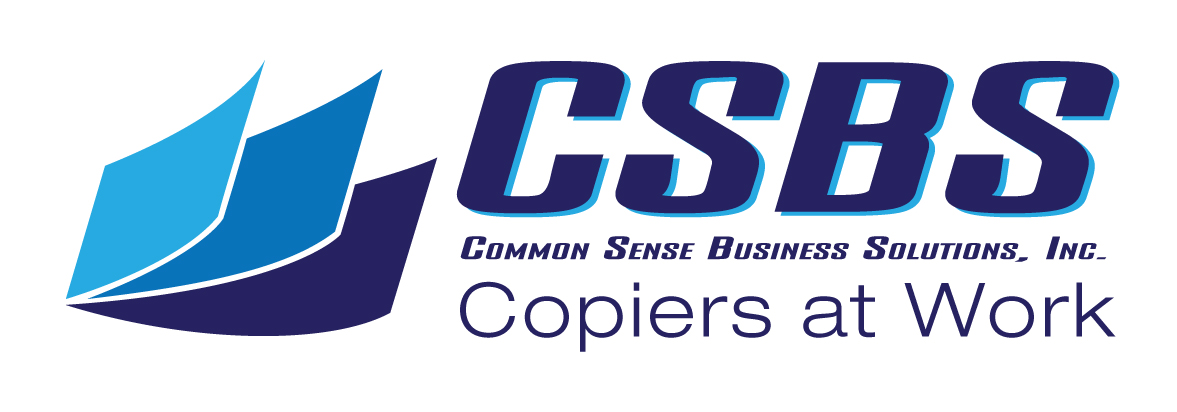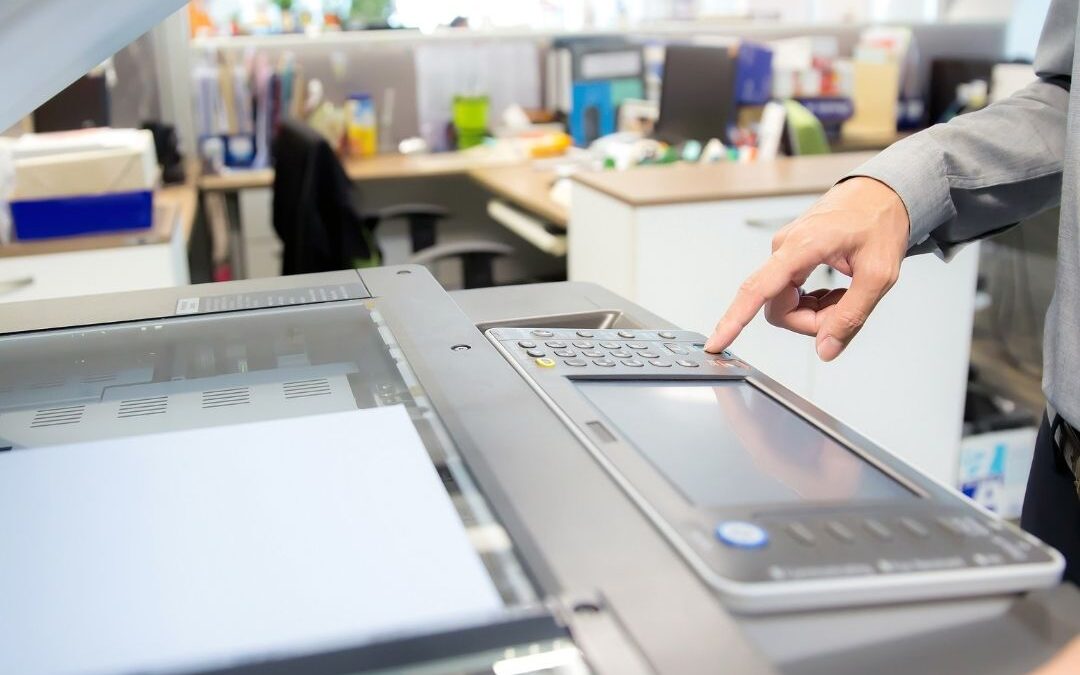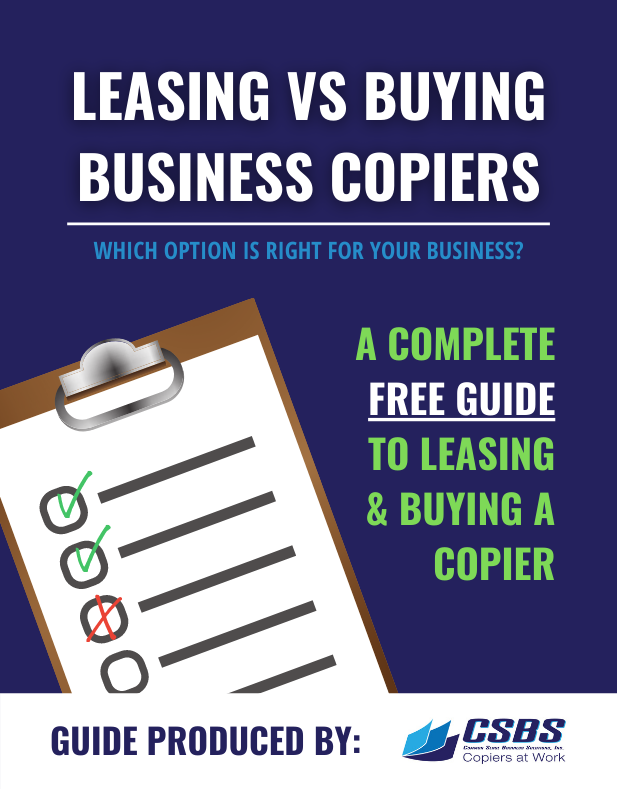How often do you find yourself frustrated because you know there is a better printer, copier, or fax machine to choose from, but you don’t know which one to buy?
Many people find themselves in this position because they lack the knowledge and time needed to keep up with all the latest developments. The following article will discuss some of the factors that can help you make a more informed decision for your office equipment needs.
Choosing a printer, copier, and fax machine can be difficult. You want it to suit your needs, but there are so many options available that it becomes nearly impossible to make a good choice even if you have extensive knowledge about printers, copiers, and fax machines. To make an educated decision, first, take into account the following factors:
Do You Need A Printer, Copier, And Fax Machine For Your Business?
Most small businesses find themselves in need of multiple machines to carry out office functions. Oftentimes, a small business owner will resort to purchasing an all-in-one style machine that is capable of handling multiple tasks at once. While purchasing a printer, copier, and fax machine in one might seem like a good idea, it could leave your business struggling to perform multiple tasks at the same time, as the machine can only do one thing at a time. So, it’s essential to identify if your business would truly benefit from one of these all-in-one printer, copier, and fax machines, or if you are better off investing in individual machines to tackle each particular task.
What Makes a Good Printer?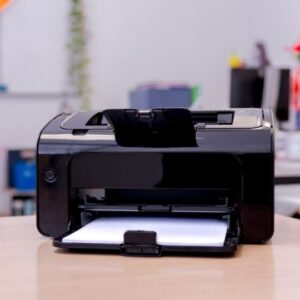
Printers are amazingly complex devices. Translating bitmapped print files into precisely placed fine grains of plastic-based toner, then adhering that to the page by baking developer fluid onto the toner so that it fuses with the paper, providing you with a hard copy of the digital file, several times a minute.
This complexity comes at a price. Engineering printers, scanners, and fax machines so that they last for a long time is a big business in America, a mature industry, which is good for you because there is a wide range of sizes and styles to choose from.
When comparing printers, you have options in sizes – there are desktop printers, stand-alone printers, commercial-grade printers, those aimed at the education market, and even hand-held printers that you can take with you!
There are six different types of printers on the market: inkjet, laser, solid ink, continuous ink, LED, dot matrix, and A3 printers.
- INKJET – run the gamut from basic, single-use printers all the way to full service copier scanners and multi-function commercial units. These printers work by forcing ink through holes in a printhead, and they’re capable of producing high-quality photo printouts as well as black and white and color documents. Inkjet printers are considered the best type of printer for blending colors seamlessly in photos, making them an excellent option for graphics-oriented businesses.
- LASER – They work by using a heated wire to positively charge a drum, which is then passed over by a laser that reverses the charge in the areas that it hits. The now-negatively charged areas of the drum represent the image or text that is to be printed. Laser printers, copiers, and toners go together and are the most common in business settings.
- SOLID INK – A laser-class printer that uses solid wax inks melted into a liquid before being used. Instead of jetting the ink onto the paper directly as inkjet printers do, solid ink printers jet the ink onto a drum, then roll them on the paper.
- CONTINUOUS INK – The Continuous Inkjet printing process works by expelling electrically charged ink droplets from a printhead nozzle and passing them through an electric field to deflect individual droplets to make up text or codes.
- LED – Just like laser printers, LED printers contain a photoreceptive drum that’s surface is positively charged with static electricity by a high voltage wire. The sheet of paper then passes between two heated rollers, fusing the toner to the page before it comes out of the printer.
- DOT MATRIX – Dot matrix printing uses a print head that moves back-and-forth, or in an up-and-down motion on the page, and prints by impact, striking an ink-soaked cloth ribbon against the paper, much like the print mechanism on a typewriter.
- A3 – This image drum is charged negatively, whereby the drawn-in A3 paper is charged positively. The laser in the interior irradiates the image drum and neutralizes all points so that later only negatively charged particles reach the paper. The A3 paper size is a European standard, but they are also available in the US.
Printers can be configured to require passcodes or scan a registered card before they can print to keep them secure. If this level of security is something you need, look for a printer model with an integrated card or keypad, instead of one that is added on later. The software is more likely to be robust and mature.
Your printers need to be level in order to work properly, so ensure that any model you consider has a method of adjusting the feet to achieve a level device.
Black and white printers only require one toner and take one pass when printing your pages. Color printers require four toners (Cyan, Magenta, Yellow, and black), So it costs more, 4 clicks vs. 1, and larger paper sizes may require even more, depending on the imaging size of the printer.
What Makes a Good Copier?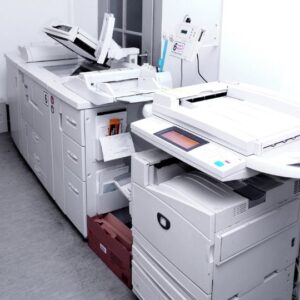
Copier machines are great, but how we use them suggests that we care more about our user experience than their technologies, so the basic design of copiers for small businesses has not changed much over the past few years.
This means that when shopping for a copier, your concerns should be more about your usage. We recommend that anyone looking to purchase a copier should consider the following:
- Copier Speed
- Paper Capacity
- Scanning
- Memory & Security
- Does it jam often
- Inkjet or Laser
- Running Cost
- Warranty and/or Service Agreement
- Buy vs. Lease
- Upgrade Options
Each of these elements adds value (cost) to your choice. So how to decide?
Assess Your Needs
Your workflow and number of users will directly affect the device’s usefulness. The best choice for a marketing department might not be the best choice for a school district or dentist’s office. Is copying all you need? Do you need FAX or scan capabilities?
How Much Will it Cost to Operate?
Supply costs are always important considerations. The type, number, and supply of toners, developer fluids, waste toner, staples, and other consumables are critical. What about service and maintenance? How quickly can it be repaired if needed?
Read Reviews
Do your homework. LinkedIn and Google Reviews are great places to start. Check the company’s Facebook pages or other social media. Often you can get a better idea of how customer-focused a manufacturer is by their social media.
How Well Will it Tie into Your Existing Network?
Consider the power and data requirements needed for the installation and setup of the device. Every manufacturer has these specifications on their website. Ensuring that you can hit the ground running with your copier machine on day one is essential.
Does it come with Support?
Choosing a copier lease that comes with, or offers continuing support, can make all the difference. Check their ratings for service, look for customer reactions.
Does it Meet Your Security Needs?
Depending upon the nature of your business and security requirements, you may have higher requirements for security. Often you may find your security needs met more comprehensively in a printer scanner copier.
A standalone copier machine can be an excellent value in the right situation. Since it is the basis of where all the higher-level machines begin, the copier can sometimes be left behind.
But if you need lots and lots of copies with little intervention, a dedicated copier machine can be the lifeblood of a great team.
What Makes a Good FAX Machine?
Selecting a fax machine depends on several factors, including the volume of documents you expect to send and receive, the initial cost of the machine, and the ongoing cost over the lifetime of the machine.
Many fax machines often are built into larger print devices, a copier, and/or scanner, and depending on the specific needs of your home or office. Certain additional features might influence the type of fax machine you purchase.
Print types
- Ribbon transfer – low, upfront cost, space-saving designs, although the cost per page ends up higher than laser or inkjet over time.
- Inkjet – higher volume for higher initial cost, better quality, even color. Smaller offices are well-served with inkjet.
- Laser – Highest initial cost, often bundled into a larger print device, highest quality, lowest cost per page. Larger offices and those dependent on FAX daily should invest in laser technology.
Other Considerations
Memory: The more extensive a fax machine’s memory, the more information it can store and process at once. This allows a larger queue for sending and receiving documents and provides better quality faxes, especially ones with fine details.
Auto doc feeder: Allows you to queue up multiple docs for unattended feeding.
Paper capacity: If you do a lot of printing, you should consider multiple paper trays.
Auto-Dialing: Allows you to save frequently-dialed numbers into memory to reduce misdials.
Design: Though secondary to function, some design elements preclude others; for example, a flatbed scanner only works in specific configurations.
Pricing is Important – What About Cost?
Remember when we discussed complexity above? Well, that level of complexity, with so many options, sizes, print types, add-ons, service plans, and consumables, calculating the cost of copier rental in Sonoma County is going to be individual and specific to your company. Another business with different needs will have different costs. A copier lease is a very complex document for just this reason. Make sure you get answers to your questions like is an all-in-one printer, copier, and fax machine right for my business.
It is important to remember that you are not alone. You have neighbors willing to get to know your business. We can teach you what you need to know about copiers for small businesses. We can talk about the advantages of a copier lease, but maybe leasing is not right for you. We can help you find the right balance between Lease vs. Buy, or whether rental might be a good idea.
You can defray or mitigate costs, take a lot of the stress and worry out of the equation by using Common Sense
